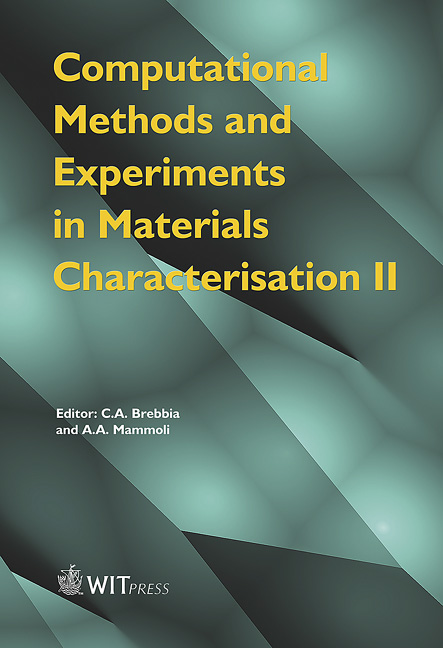Polymeric Foam Behaviour Under Impact Tests: Deformation Study By Micro Tomography
Price
Free (open access)
Transaction
Volume
51
Pages
11
Published
2005
Size
862 kb
Paper DOI
10.2495/MC050211
Copyright
WIT Press
Author(s)
P. Viot & D. Bernard
Abstract
The mechanical behaviour of polymeric foams depends on several parameters such as temperature, material density and strain rate. This last point implies that compression tests on conventional testing machines are not sufficient. The behaviour characterisation requires special apparatus such as the fly wheel, drop tower or Hopkinson bar, allowing high speeds of compression. The studied polypropylene foams are multi-scale materials; agglomerated grains (diameter from 2–3 mm) are visible to the naked eye and, at the microscopic scale, each grain is composed of smallest closed cells (diameter of a few tens of microns). The response of a sample to a shock presents three regimes; an elastic phase followed by a plastic phase and finally the densification. The plastic phase is of prime interest since a great part of the shock energy is dissipated there. Micro tomography was used in order to better understand the damage mechanisms during the plastic plateau. The final objective of this work is to determine the 3D-strain field of porous materials at several levels of shock. As tomography is not fast enough to directly follow the impact deformation, interrupted impact tests were carried out by controlling the levels of the sample deformation. Between each impact step, a micro tomographic analysis will enable the analysing of the progressive deformation of the sample. The results of these impact tests completed by the micro tomographic visualisation are presented and commented in this paper. Keywords: foam, cellular material, dynamic loading, impact, micro tomography.
Keywords
foam, cellular material, dynamic loading, impact, micro tomography.





